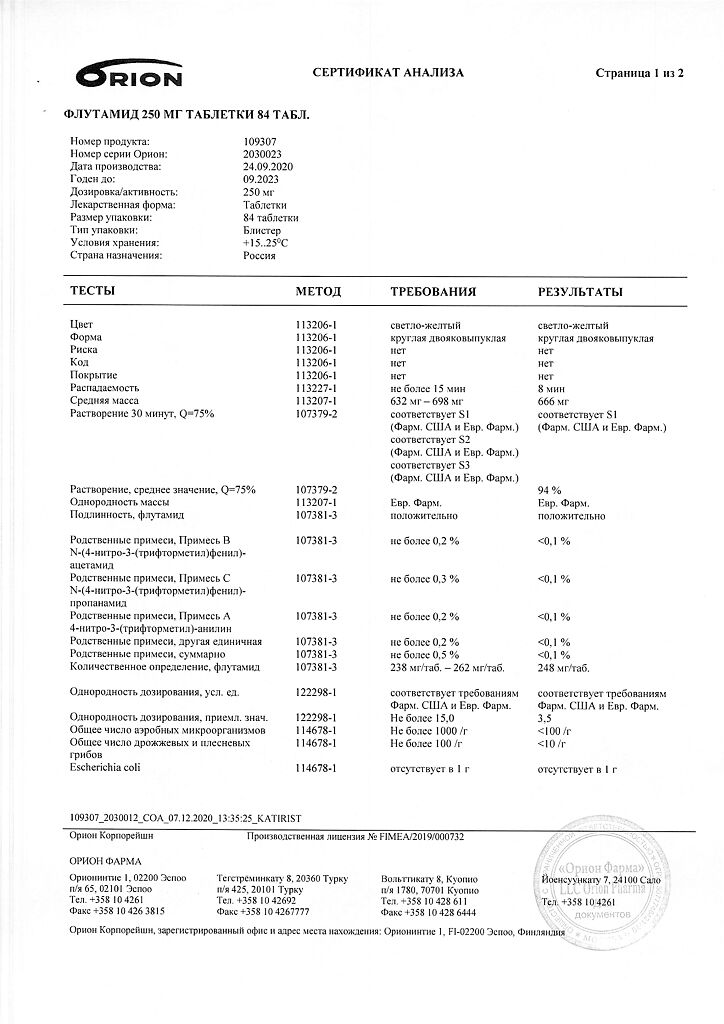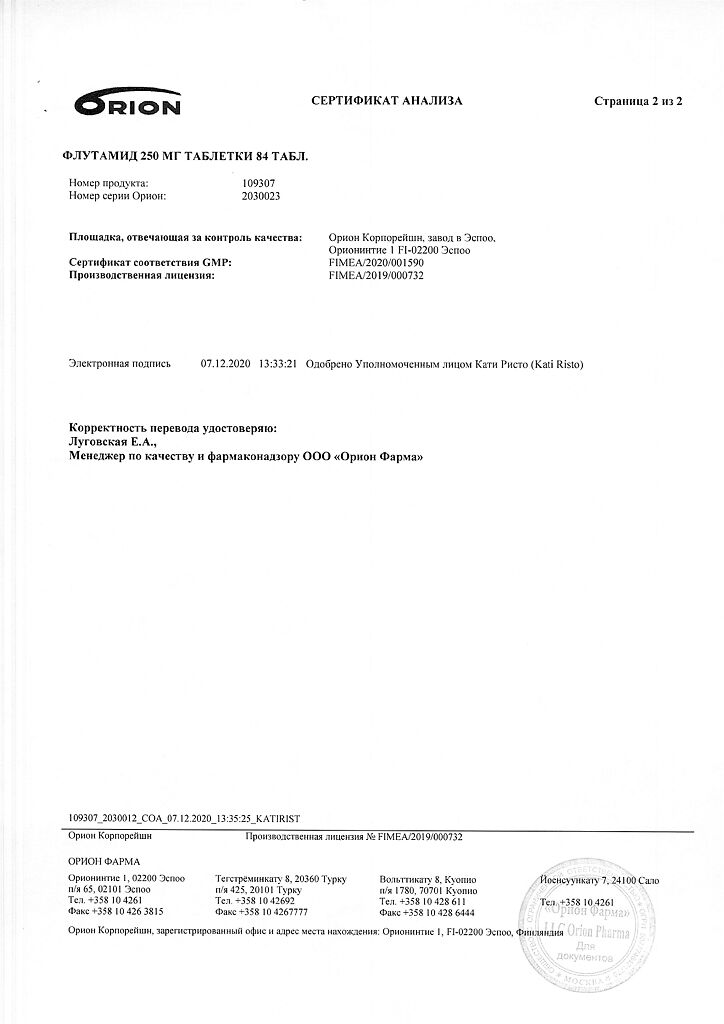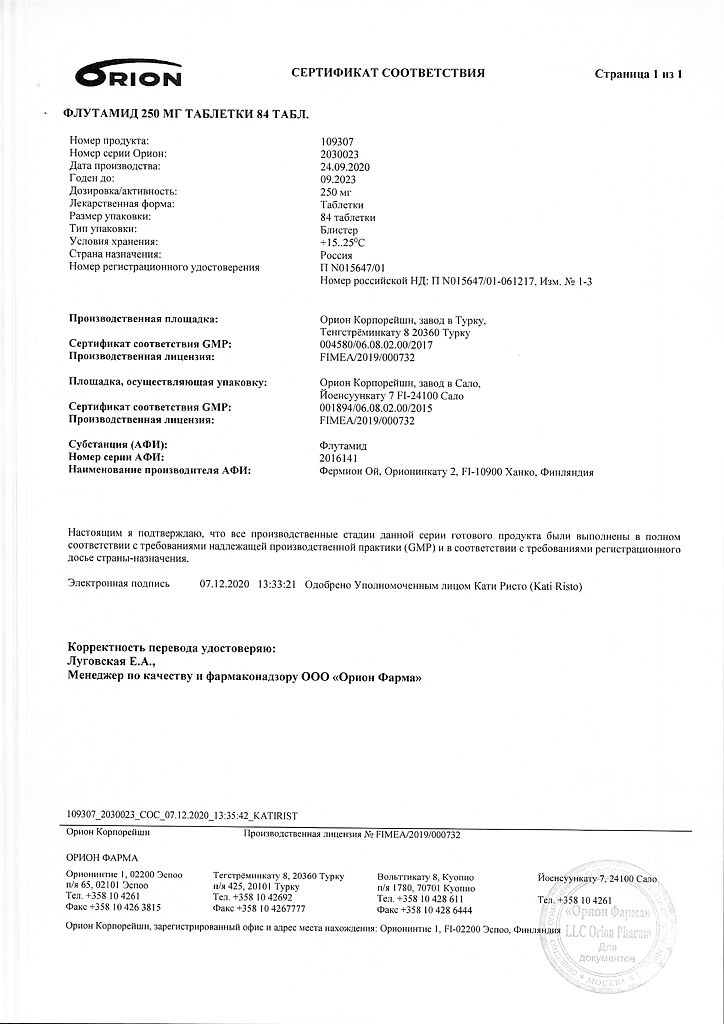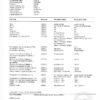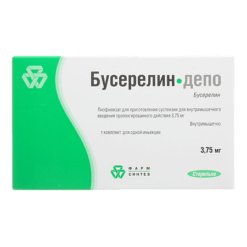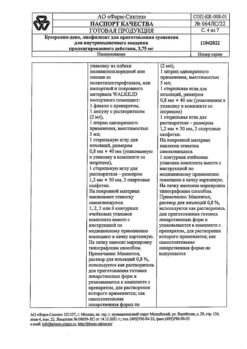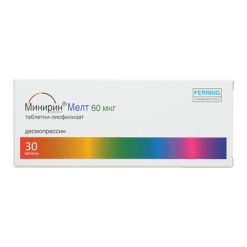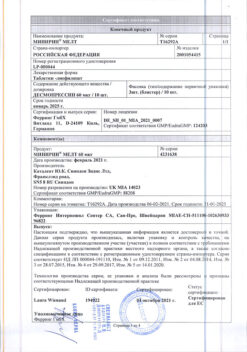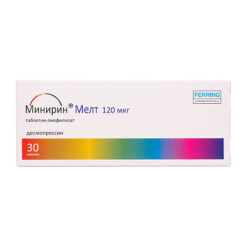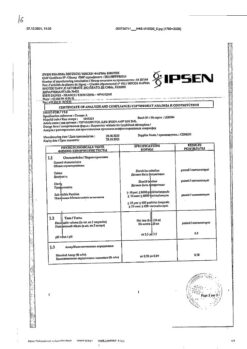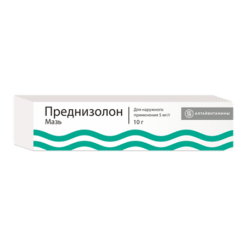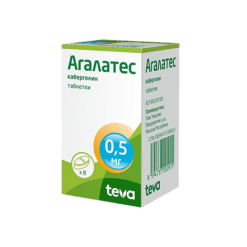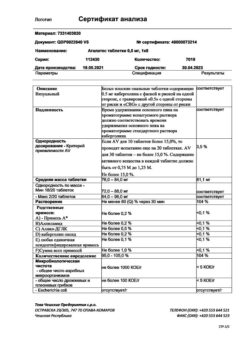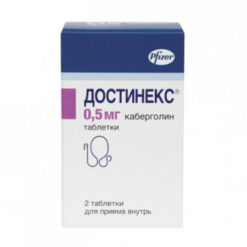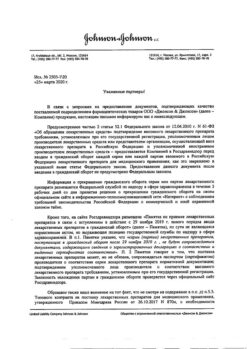No products in the cart.
Flutamide, tablets 250 mg 84 pcs
€50.63 €42.19
Out of stock
(E-mail when Stock is available)
Description
Flutamide is a nonsteroidal drug with anti-androgenic, anti-tumor effects.
Pharmacodynamics
Competitively blocks androgen receptors of target tissue cells and prevents androgens binding to them. Prevents the manifestation of the biological effects of androgens in androgen-sensitive organs (including the prostate gland and seminal vesicles). After flutamide administration, an increase in plasma levels of testosterone and estradiol has been observed. Flutamide’s ability to inhibit the action of testosterone at the cellular level is in addition to the drug-induced castration caused by gonadotropin-releasing hormone (GnRH) analogues.
Pharmacokinetics
When taken orally, it is rapidly and completely absorbed from the GI tract. It is metabolized in the liver. At least 6 metabolites are identified. The main metabolite found in blood plasma – alpha-hydroxylated derivative (2-oxiflutamide) – is biologically active. Binding to plasma proteins is 94-96% (flutamide) and 92-94% (2-oxiflutamide). Cmax of 2-oxiflutamide is 2 h. T1/2 2-oxiflutamide is 6 h (in elderly patients, 8 h after a single dose and 9.6 h when stable concentration is reached). It is excreted mainly by the kidneys as metabolites, 4.2% – with the feces within 72 hours.
Indications
Indications
Treatment of patients with advanced prostate cancer for whom testosterone suppression is indicated
Initial therapy in combination with an LH/RH analogue or in combination with orchiectomy (complex androgen blockade)
Treatment of patients undergoing LH/RH analogue therapy or undergoing surgical Ablatio testis
Treatment of patients who have not resorted to endocrine therapy or for whom such therapy is not tolerated, but which is indicated for them due to need
Pharmacological effect
Pharmacological effect
Flutamide is a non-steroidal drug with antiandrogenic and antitumor effects.
Pharmacodynamics
Competitively blocks androgen receptors in target tissue cells and prevents androgens from binding to them. Prevents the manifestation of the biological effects of androgens in androgen-sensitive organs (including the prostate gland and seminal vesicles). After taking flutamide, there is an increase in plasma levels of testosterone and estradiol. Flutamide’s ability to interfere with the action of testosterone at the cellular level is complementary to the drug castration caused by gonadotropin-releasing hormone (GnRH) analogues.
Pharmacokinetics
When taken orally, it is quickly and completely absorbed from the gastrointestinal tract. Metabolized in the liver. At least 6 metabolites have been identified. The main metabolite found in blood plasma, the alpha-hydroxylated derivative (2-hydroxyflutamide), is biologically active. Plasma protein binding is 94–96% (flutamide) and 92–94% (2-hydroxyflutamide). Cmax of 2-hydroxyflutamide – 2 hours. T1/2 of 2-hydroxyflutamide – 6 hours (in elderly patients – 8 hours after a single dose and 9.6 hours when a stable concentration is achieved). Excreted primarily by the kidneys in the form of metabolites, 4.2% in feces within 72 hours.
Special instructions
Special instructions
When treating prostate cancer, it is necessary to monitor liver function (laboratory tests should be performed once a month for the first four months and then regularly).
If liver enzyme levels increase 2-3 times the upper limit of normal values and/or jaundice occurs in the absence of liver metastases, flutamide should be discontinued. When the first symptoms of liver dysfunction appear, such as itching, dark urine, nausea, vomiting, persistent loss of appetite, yellowing of the skin or whites of the eyes, pain in the right hypochondrium, or flu-like symptoms of unknown origin, you should immediately consult a doctor.
When assessing the results of differential diagnosis of male hypogonadism, it is necessary to focus on the following indicators: in healthy people with normal basal excretion of gonadotropins after administration of the drug, an increase in their secretion by 1.5 times or more is observed; with primary hypogonadism, the initial excretion of gonadotropins is significantly increased, less often – normal, the use of the drug leads to a further increase in their secretion by 1.5-2 times or more; with secondary hypogonadism, the initial excretion of gonadotropins is reduced, less often – normal, a significant increase in their excretion after taking the drug is not observed.
Active ingredient
Active ingredient
Flutamide
Composition
Composition
1 tablet contains:
Active substances:
flutamide 250 mg.
Pregnancy
Pregnancy
Not applicable.
Contraindications
Contraindications
Hypersensitivity, severe diseases of the liver, kidneys, thyroid gland.
With caution: patients with reduced liver function, patients with a tendency to thrombosis and cardiovascular diseases.
Side Effects
Side Effects
From the endocrine system: gynecomastia and/or galactorrhea.
From the digestive system: nausea, vomiting, jaundice, diarrhea, increased activity of liver transaminases.
From the side of water-electrolyte metabolism: fluid retention.
Other: rarely – headache, thromboembolism, renal dysfunction, sleep disturbances, subcutaneous hemorrhages, lupus-like syndrome.
Interaction
Interaction
It is believed that drug interactions are possible with the simultaneous use of flutamide with paracetamol, opioid analgesics, and NSAIDs.
Overdose
Overdose
Treatment: if the patient is conscious and without spontaneous vomiting, vomiting should be induced.
Monitoring of vital functions and symptomatic therapy are necessary.
Hemodialysis and peritoneal dialysis are ineffective (due to the high degree of binding to plasma proteins).
Storage conditions
Storage conditions
Store in a dry place, protected from light, at a temperature of 15-30 °C.
Shelf life
Shelf life
3 years.
Manufacturer
Manufacturer
Orion Corporation, Finland
Additional information
| Shelf life | 3 years. |
|---|---|
| Conditions of storage | Store in a dry, light-protected place at 15-30 °C. |
| Manufacturer | Orion Corporation, Finland |
| Medication form | pills |
| Brand | Orion Corporation |
Related products
Buy Flutamide, tablets 250 mg 84 pcs with delivery to USA, UK, Europe and over 120 other countries.


